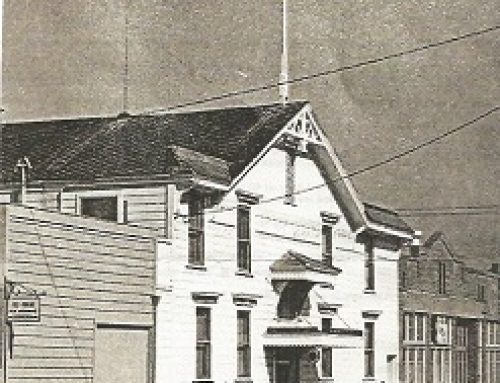Eagle-Eyes has been spotting various headlines over this past week highlighting the 40th Anniversary of “Earth Day,” 2010. The Trio has had an interest in the evolution of our country’s Green Movement for decades and wanted to blog about their personal involvement over the past few years, but chose not to do so because they were afraid that their story would sound “self-centered” or “bragging.” However, when the term “eco-friendly” appeared repeatedly in these various articles, it brought back memories of a personalized California license plate that The Trio owned for many years … ECO EDUC. What is “ECO EDUC” and how does it relate to the Earth-friendly celebrations of today?
It was about this time of year in 1960 when Me, Myself & I visited San Francisco to explore the possibility of becoming the Coordinator of Outdoor Education at SF State College. To make a long story short; after visiting the college’s Camp Leonard (now named Sierra Field Campus), located on Highway 49 near Sierra City, and getting acquainted with the beautiful “City by the Bay,” the position was offered and accepted without hesitation. The following two decades were filled with a variety of projects and new courses that fall under the umbrella term … ECO Educ … which stands for Environmental, Conservation, and Outdoor Education.
“Conservation Education,” was actually an outgrowth of the Nature Study movement of the late 18th Century and gained its own momentum in the 1920s and 30s. “Outdoor Education” surfaced in the 1940s and 50s; but “Environmental Education” was barely used or understood (just like “ecology”) until the late 1960s during the period. pre-Earth Days. Outdoor education (just like Nature Study) advocated the utilization of the out-of-doors as a “laboratory for learning.” These outdoor laboratories or “classrooms” may range from the local school grounds and school gardens, to nearby public parks (Shollenberger), and extend to county, state, and national parks (Muir Woods, Angel Island, the Marin Headlands, Pt. Reyes National Seashore, and Yosemite National Park.) Then, there are “resident” outdoor education centers, historically called “school camps” like nearby Walker Creek, where students spend a week learning about ecological relationships and many other subject matter areas.
We’ll close today’s blog with the thought that over the years, creative teachers may offer their students a DEAL …the Direct Experience Approach to Learning … when they use an outdoor laboratory. Stay tuned for additional blogs when The Trio will recall some of their favorite adventures teaching and learning in the out-of-doors. BTW, did you know that a group of California outdoor educators established the Foundation for the Advancement of Environmental Education in 1968? (That was pre-Earth Day – 42 years ago.)
P.S. I wonder how many of the Petaluma 360 readers may have participated in an ECO Education program? Please feel free to share your experiences.

